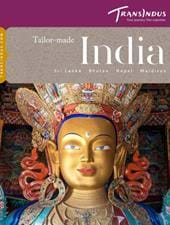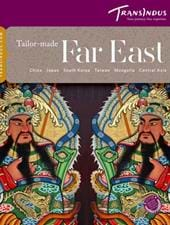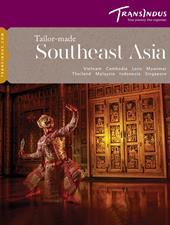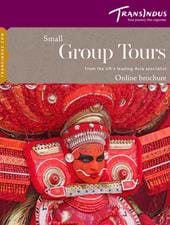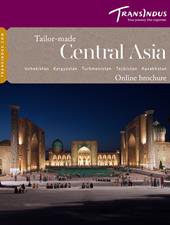Time Zone: UTC +7 hours
Flying Time:16 hours 30 mins
Capital: Vientiane
Currency
Local currency in Laos is the Kip. All goods and services can be paid for in Kip or dollars, although the Kip price is often better than the corresponding Dollar price. Travellers Cheques are best carried in US dollars and can be exchanged in most major tourist town banks and hotels. Similarly credit cards can be used in major hotels, tourist shops and bigger restaurants. Do not rely on either if travelling to more remote and rural areas. We recommend that you don’t change too much money into local currency at once: the Kip only comes in low denomination notes, so you will end up with a very full wallet!
When you pay in dollars, you may well receive your change in Kip notes or a mixture of Dollars and Kip. Any Kip will come in handy for small transactions such as cold drinks and other items worth less than the dollar. Be careful to check the notes you are given in change, as torn or damaged notes may be difficult to exchange.
Please note, visa for Laos is obtained on arrival at the airport or border crossing. It costs $35 per person and you need to carry this in cash, in addition to 2 passport size photographs each.
Healthcare
Laos is a tropical destination, so be sure to drink plenty of fluid to prevent heatstroke and dehydration. Avoid drinking tap water and taking ice in drinks. Stick to bottled water (or boiled/UV treated water available at the hotel) and ensure that the seal is opened by you/in your presence. Aerated waters (bottled soft drinks) are fine.
Beer Lao is widely available, although you may find it quite different from its European relatives. Wine, if available, is quite costly. Check the price before ordering. Other liquors, such as “Lao Lao” and ‘rice wines’, are also available though not all meet western consumer standards. If in doubt, we recommend that you stick to the more expensive imported brands.
The cuisine of Laos is unique: a combination of lots of aromatic herbs, plenty of vegetables and their surprisingly palatable fermented fish sauce. You will also find Western alternatives available at many restaurants and hotels. We do recommend that you eat moderately for the first few days. This allows your system to get used to the changes. We recommend you carry with you a small supply of basic health care medication such as travel sickness tablets, anti-diarrhoea tablets, antacids for indigestion, insect repellent, sun creams and selected antibiotics after discussion with your doctor. Although most of these items are available in Laos, the security provided by brands one is used to, is reassuring. We strongly recommend that all travellers be properly insured for the holiday. While taking insurance, please check that it includes repatriation costs.
Clothing and Climate
Laos has two broad seasons. The rainy season runs from May through October and the dry season from November to April. Most rain falls in the south. For the most part, Laos is hot, although there is a good deal of fluctuation between summer and winter temperatures at higher elevations. The capital, Vientiane, ranges from the mid-30s Celsius (mid-80s Fahrenheit) in April to the upper-20s Celsius (mid-70s Fahrenheit) in January. In the mountains, however, temperatures can plummet to near freezing in December and January.
In general, during the day it is best to wear light, comfortable cottons with a pair of good ventilated walking shoes. If your trip to Laos includes mountainous areas, you will need clothes for all temperatures. Sunglasses, a hat, t-shirts, shorts that are not too revealing, long trousers, some light-weight, long-sleeved tops and a light jacket that is wind and rain-resistant will get you through most trips. If you plan to visit northern Laos in the winter, you’ll need some warm clothing. Mountainous areas can get chilly; choose clothes you can layer. If trekking is on your agenda, you will need sturdy footwear—plus lots of socks. At some of the monuments/pagodas, it is advisable to avoid sleeveless tops and short skirts. You may also be asked to remove your socks and shoes. Slip-on shoes or sandals are useful for visits to pagodas or people’s houses. Most hotels, including the more exclusive ones, do not insist on formal wear in restaurants and smart casuals are acceptable.
Shopping
Laos provides great opportunities for shopping, including beautiful silk weavings, tribal fabrics and embroidery, silverware, woodcarvings, paintings and much more. If asked, our local agents will advise on where best to buy particular items.
When purchasing an expensive item, always check the level of duty payable in the UK on your import. Please remember Customs Duty and VAT is payable on all goods above the value of £340 per person, even if an item is exempt from other import duties.
Laos is still developing, and so its people can be very persistent when trying to make money, especially around tourists whom they perceive as very wealthy. People will try to overcharge you, but rather than becoming irritated, join the game and bargain hard! It is also recommended to check prices of the same items in the neighbourhood before reaching a deal. If you being followed by street vendors and do not wish to make a purchase, often the best course of action is say “no” firmly and politely, and continue on your way. Do not hesitate or linger, as this will encourage the seller to try and engage you further.
Please note, TransIndus does not endorse any shop or factory outlet. We, or any of our associate offices, are not responsible for any shopping and related problems, although we assure you of any help that we can provide.
Voltage
The electric voltage in Laos is supplied at 220 volt AC. Most English electric appliances work well, but a universal adaptor is needed.
